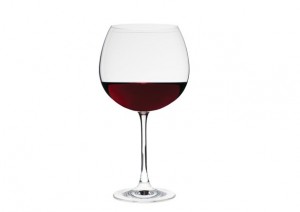 Whether it’s baseball cards or Beanie Babies, most collections don’t result in financial gain for the collector. The dividends tend to be paid out in enjoyment instead of dollars, and only the rarest of specimens will ever appreciate in value. Investing in more grown-up items, such as wine, won’t necessarily inoculate you from loss, either. Wine investing is often more for pleasure than price appreciation. Sipping wine may be great while sitting by the fireplace, but no one’s making a killing from a cellar stocked with pedestrian wine-or even better wines, in some cases.
Whether it’s baseball cards or Beanie Babies, most collections don’t result in financial gain for the collector. The dividends tend to be paid out in enjoyment instead of dollars, and only the rarest of specimens will ever appreciate in value. Investing in more grown-up items, such as wine, won’t necessarily inoculate you from loss, either. Wine investing is often more for pleasure than price appreciation. Sipping wine may be great while sitting by the fireplace, but no one’s making a killing from a cellar stocked with pedestrian wine-or even better wines, in some cases.
At the higher end of the spectrum, the equation can change. Some vintages, costing thousands of dollars per case, have dramatically increased in price, rising more than 300 percent since 2004. Stocks, as measured by the Standard & Poor’s 500 Index, haven’t even doubled over the same period.
To find out more about buying wine, read our wine buying guide.
An alternative investment
So is now the right time to jump into the tub of grapes with both feet? Not necessarily, at least judging by the performance of the Liv-ex 100 Fine Wine Index. Akin to a Dow Jones industrial average of wines, the Liv-ex comprises “100 of the most sought after vintages”-mostly Bordeaux. Prices increased more than 60 percent from 2009 to 2011 but have since fallen back to 2009 levels (see chart).
Even if you were inclined to consider an investment, wine-based mutual funds remain in short supply. In the U.S., you won’t find any such funds by using an online broker. But for $50,000, the Bottled Asset Fund, a portfolio focusing on Italian wine, will consider taking you on as an investor.
We did find one mutual fund devoted to wine, headquartered in Bermuda. That’s just as well. With hedge-fund-like expenses (an annual fee of 1.5 percent, a performance fee of 20 percent of returns, and a subscription fee of 5 percent), most of us would likely be better off investing in two-buck Chuck.
If investing in wine funds seems daunting, a more direct approach, wine futures, may be more palatable. Wine futures, or pre-arrivals, are vintages with limited availability purchased well in advance of production. Securing wine from a reputable wine merchant gets you in on the ground floor-the closest to an IPO some of us may ever get.
How do you know whether the wine purchased will appreciate in value? Well, that’s where the speculation comes in, and there’s no guarantee. Since the 2002 vintage, purchasing wine futures would have resulted in gains only 50 percent of the time.
If you don’t have a wine cellar in your home, wine merchants can store your wine for you. Like safe deposit boxes at banks, wine storage lockers come at a cost. The website WineFolly.com quotes prices ranging anywhere from $20 to $200 per month, depending on size.
Beware of fraud
Wine investing has attracted much attention from investors in recent years, and it has also become a target of fraudsters. Most of the stuff they sell is old wine in new bottles, and their marketing techniques have the hallmarks of many other scams: cold calling, “guaranteed” returns, and high-pressure sales tactics. (Most wine merchants we know are more demure.)
Overseas, there have been reports of fraudsters using websites with names similar to legitimate outfits, looking to bilk unsuspecting buyers. In the U.S., the Federal Trade Commission has, on occasion, reined in wine-investment outfits that overpromised and underdelivered.
All of this is to say that although investing in wine could enhance your portfolio, it could also diminish it. If you decide to try wine futures, consider the merchant’s reputation as well as the price of your investment. Given the pitiful performance of wine in recent years, invest for reasons other than price appreciation-perhaps to cultivate your expertise in sniffing, swirling, and slurping. In that case, if the value of your wine investments falls, at least you can always open up a bottle and drink it. $
Source: Consumer Reports
